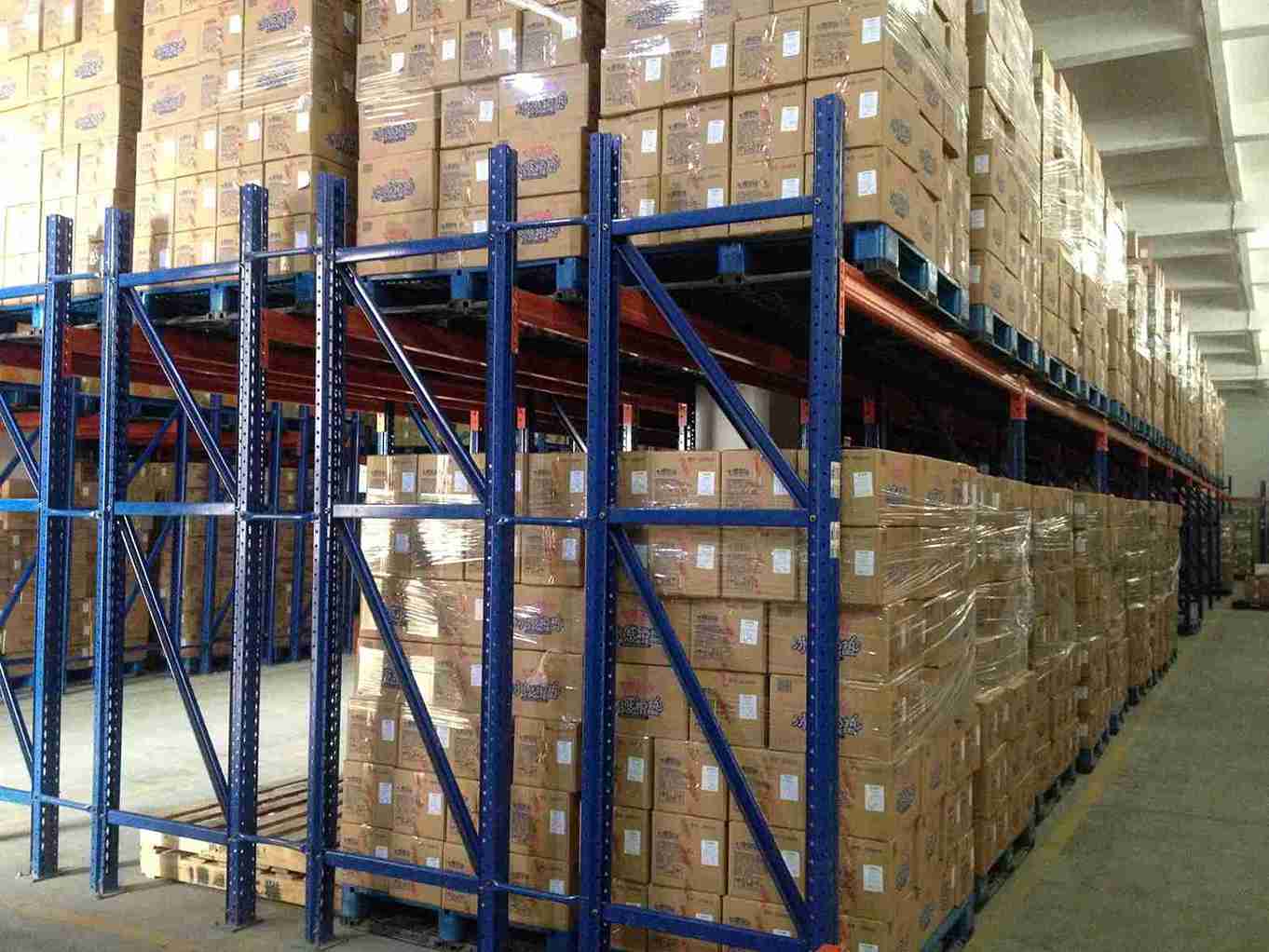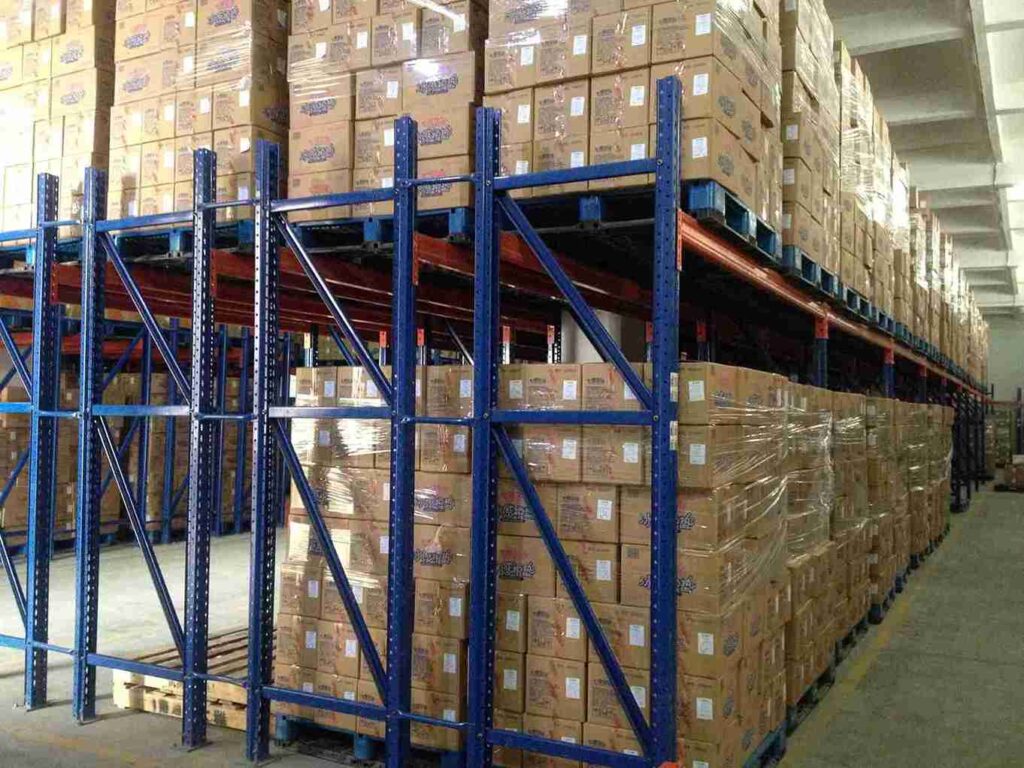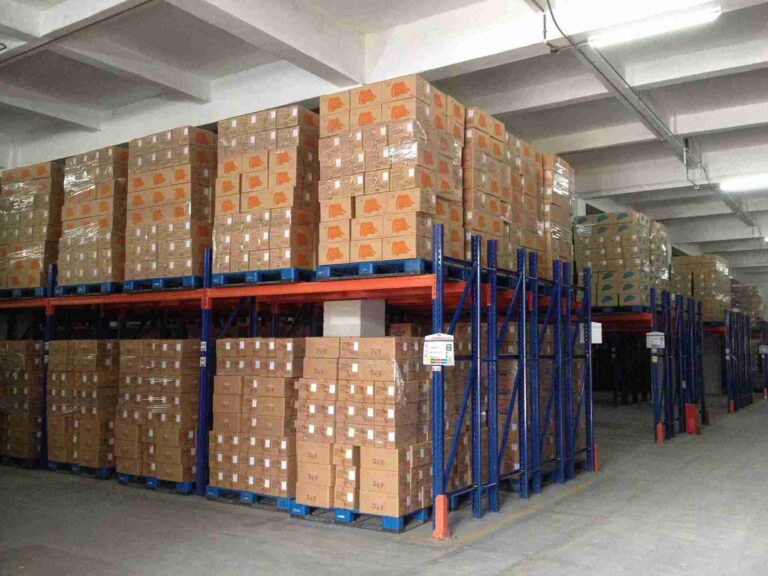📐"前 50 个企业查询可获得定制 3D 仓库设计" 计划

Abstract
In the ever-evolving landscape of warehouse management, optimizing storage solutions is paramount. Double-deep racking cost savings present a strategic approach to enhancing storage density and operational efficiency. This article delves into the intricacies of double-deep racking systems, exploring their benefits, implementation strategies, and the substantial cost savings they offer.
Introduction to Double-Deep Racking
Double-deep racking is a high-density storage solution where pallets are stored two rows deep, reducing the number of aisles and increasing storage capacity. This system is particularly beneficial for warehouses aiming to maximize space utilization without expanding their physical footprint.meijer-handling-solutions.com+3Total Warehouse+3Hyperack Storage Racking+3

Benefits of Double-Deep Racking Systems
Increased Storage Density
By storing pallets two deep, warehouses can achieve up to a 40% increase in storage capacity compared to single-deep systems. This maximization of vertical and horizontal space leads to significant Double-deep racking cost savings.Total Warehouse
Optimized Floor Space
Reducing the number of aisles frees up floor space, allowing for more storage or operational activities. This efficient use of space contributes to overall cost reductions.
Enhanced Operational Efficiency
With fewer aisles and more concentrated storage, material handling becomes more streamlined, reducing travel time for forklifts and improving picking rates.
Cost Analysis and Savings
Initial Investment vs. Long-Term Savings
While the initial setup of double-deep racking may require investment in specialized equipment, the long-term Double-deep racking cost savings are substantial. Reduced need for warehouse expansion, lower utility costs due to compact storage, and improved labor efficiency all contribute to a favorable return on investment.
Comparison with Other Systems
Compared to drive-in or push-back racking systems, double-deep racking offers a balance between cost and efficiency. It provides higher selectivity than drive-in systems and is more cost-effective than push-back systems, making it a preferred choice for many operations.Greenspace Industrial+1unracking.com+1
Implementation Strategies
Assessing Warehouse Needs
Before implementation, it’s crucial to analyze inventory profiles, SKU velocity, and turnover rates to determine the suitability of double-deep racking.
Equipment Requirements
Specialized forklifts with extended reach capabilities are necessary to access the second pallet in the racking system. Investing in the right equipment ensures smooth operations and maximizes the benefits of the system.acepalletracking.com+4vinatechracking.com+4Greenspace Industrial+4
Operational Considerations
Inventory Management
Double-deep racking is best suited for LIFO (Last-In, First-Out) inventory systems. Warehouses must evaluate their inventory rotation needs to ensure compatibility.acepalletracking.com+2conger.com+2vinatechracking.com+2
Training and Safety
Operators require training to handle the specialized equipment safely. Implementing safety protocols and regular maintenance checks are essential to prevent accidents and ensure the longevity of the racking system.
Case Studies
Case Study 1: Cold Storage Facility
A cold storage warehouse implemented double-deep racking and achieved a 35% increase in storage capacity. This led to significant Double-deep racking cost savings by reducing energy consumption per pallet stored and delaying the need for facility expansion.
Case Study 2: Retail Distribution Center
A retail distribution center adopted double-deep racking to manage high-volume SKUs. The result was improved picking efficiency and a 25% reduction in labor costs, showcasing the system’s impact on operational expenses.
Comparative Analysis with Other Racking Systems
Single-Deep Racking
While offering high selectivity, single-deep racking requires more aisle space, leading to lower storage density and higher per-pallet storage costs.
Drive-In Racking
Drive-in systems provide high-density storage but suffer from low selectivity and higher risk of product damage due to forklift entry into the racking structure.conger.com+2acepalletracking.com+2unracking.com+2
Push-Back Racking
Push-back systems offer better selectivity than drive-in but come with higher installation and maintenance costs. Double-deep racking strikes a balance between these systems, offering both efficiency and cost-effectiveness.
Maintenance and Safety
Regular Inspections
Routine checks of the racking structure and equipment ensure safety and prevent costly downtime.
Load Management
Adhering to load capacities and proper pallet placement prevents structural damage and extends the lifespan of the racking system.
Technological Integrations
Warehouse Management Systems (WMS)
Integrating WMS with double-deep racking allows for real-time inventory tracking, optimized picking routes, and efficient space utilization.
Automation
Incorporating automated guided vehicles (AGVs) and robotic systems can further enhance the efficiency of double-deep racking systems, leading to additional Double-deep racking cost savings.
Future Trends in Warehouse Storage
The evolution of warehouse storage solutions points towards increased automation, data-driven decision-making, and sustainable practices. Double-deep racking systems are poised to adapt to these trends, offering scalable and eco-friendly storage options.
Conclusion
Implementing double-deep racking systems presents a strategic opportunity for warehouses to enhance storage capacity, streamline operations, and achieve significant cost savings. By carefully assessing operational needs, investing in the right equipment, and integrating technological solutions, businesses can unlock the full potential of Double-deep racking cost savings.
Frequently Asked Questions
1. Is double-deep racking suitable for all types of products?
Double-deep racking is ideal for high-volume, low-SKU operations. It’s less suitable for perishable goods requiring FIFO inventory management.
2. What are the initial costs associated with implementing double-deep racking?
Costs vary based on warehouse size and equipment needs but are generally offset by the long-term Double-deep racking cost savings achieved through increased efficiency.
3. Can existing warehouses retrofit double-deep racking systems?
Yes, many existing facilities can be adapted to accommodate double-deep racking with proper planning and equipment upgrades.RMH Systems
4. How does double-deep racking impact picking times?
While access to the second pallet requires additional steps, overall picking efficiency can improve due to reduced travel distances and optimized storage layouts.acepalletracking.com
5. Are there any safety concerns with double-deep racking?
As with any racking system, proper training, equipment maintenance, and adherence to safety protocols are essential to minimize risks.
This article provides a comprehensive overview of double-deep racking systems, emphasizing their role in achieving substantial Double-deep racking cost savings. By integrating these systems thoughtfully, warehouses can enhance efficiency, reduce costs, and position themselves for future growth.




